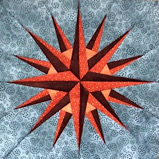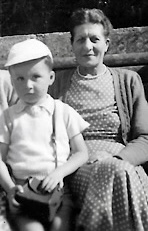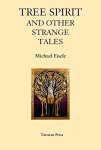Des Lewis will be 77 years old on 18 January 2025
Those who have read these episodic brainstorming reviews of mine must know they are very personal — rough-shod and spontaneous. Synchronicity and anagram mixed. I know they are not professional, never potentially publishable other than in the madness of my head, but I do hope they show grains of dark truth and cosmic panache.

These Des Lewis Gestalt Real-Time Reviews were founded in 2008.

‘What’s the loveliest word in the English language, officer? In the sound it makes in your mouth, in the shape it makes on the page? What do you think? Well now, I’ll tell you: E-L-B-O-W. Elbow.’ — THE SINGING DETECTIVE

“How shall a man find his way unless he lose it?” — Walter de la Mare

To any current genre author I have reviewed before — if you have a new story recently published or soon to be published in a collection or anthology, you may have a review by me of the story that also showcases where it is published. See HERE. (This is because I am no longer well enough to review as many books as I once did.)
Fresh Fictions, free to read HERE.
No AI input in preparation of my texts whatsoever.
THE NEW NONSCENIC
Photos here: https://conezero.wordpress.com/2024/02/24/d-f-lewis-recent-photos-1/

A six-letter surname that seems consonantally abstemious,,,
Like ‘facetious’, ‘abstemious’ has all the vowels and in the right alphabetical order!
MOUSE
“A museum is a place for things that are completed, no longer changing, growing, or striving to be born.
Perhaps it is better so.”
The word museum and mouse seem in assonance. And this story of novelette length seems full of much more than just music and magic. I can safely say, with utter conviction, it is an important work, and will remain important to me for the rest of my life. Glad I managed to squeeze it in, as it were, within the time left. Hauling on the stretchers of the canvas fabric or working the bales at the docks. This is the tale of young Schalken. Adopted from the streets by Derk, a larger than life Dutch painter living soon after the time of the Dutch masters. The act of painting and what creatures reside in the back shadows, to help with the painterly build up of gestalt, as sometimes I will now see myself being helped to draw together my own gestalts of book appreciation. So that I can finally enter the books themselves. These books’ characters taking me with them to some idyllic place. As this truly wonderful weird literature classic of a story did. Nearly did, that is. I am not sure who this author is, but I am already smitten with his work. I shall need to eke it out, savour it, so that my life lasts as long as my reading of it, even while learning accretively how it manages to entice me to work speedier at my reading of it so that it can claim me whole sooner. Not a sudden mousetrap but a slowly slowly dreamcatch the reader.
“. . . So that after a time one ceased to regard each individual wave, for in the end there was only the sea . . . endless and eternal.”
AEDIN OF THE TAEXILI AND THE GIANT
“…and alongside they found the two swords, Fragarach and Caladbolg, that were the swords of heroes.”
A fable of swords, sorcery and monsters, and land-grabbing; we eventually follow a brother and sister with simple weapons to meet the greatest monster giant of them all, so as to grab its land, after two mighty warriors had failed before them, a moral for our times with the raiders’ holy man perhaps tweeting in his hut and an old woman met along the way as perhaps another more oblique version of Mouse… but why was Aedan also spelt Aedin and Aden in the text? A relief, as I had always thought I was the only one suffering from loose vowels. A loose head, too.
LESHI
“Looking at his ancestral home for the first time with the benefit of his military training he noted how the walls rose from the living stone of the mountain on which it was built so cleverly that it was impossible to tell where nature left off and artifice began.”
This is a sublimity-accomplished styled, if with many melodramatic legendary longueurs of legend and scenery, fabulous Gothic of novella length about a man returned to his ancestral castle in the Carpathian Mountains, wherefrom he left, as a boy, his father (now dead), his little sister (now a woman), a genius-loci of noble thoughts now subsumed by a poverty that he needs to heal, leading to a negative interchanging synergy of castle and forest-mountains, whereto we reach a symbiotic fable’s to-be-fathomed-out moral of found treasure, following his canter in the surrounding wilds on a gelding, towards a potential golden gestalt…
“give our troubles to the wind”
SACRIFICE
‘Ah yes, the Tablet.‘
It seems apt I read this well-written hokum upon a tablet. Wilhelm’s quest from the French city with Nanishe — a suitable sacrificial virgin (supposedly) — whom he picked as key to this Eastern quest for matters concerning djinn and the tablet of Suliman, and mysterious inimical forces. I think the eponymous sacrifice was not necessarily that of Nanishe but the sacrifice was in fact my own for having the one unmissable chance so far to read something like MOUSE.
COME NOT HIGH
A tale based on Tír na nÓg mythology, pioneering lands with a sort of magical SF ark, a rhapsodic blend of Cordwainer Smith and Lord Dunsany, with a Biblical flow of narration. A fable for humanity and our ways, I guess.
“…marvellous things of which she understood perhaps only a tiny bit, but it did not matter at all.”
There may be some sporadic delays in this review, but continue it, I always will!
THE PROFESSOR AND THE NIXIE
“Some time later he was pondering the term óõëëïãéóìüò and wondering if it was truly equivalent to a simple syllogism…”
Or whether Bishop Berkeley’s dialogues with Hylas and the Nymphs (Nixies?) were in any way connected with Aristotle’s Analytics.
This is the most beautifully limpid narrative of the Professor returning to his home in the cattle-lazy dream-summery farmland at the end of a waylaid railway track, after thirty years as a successful academic, until his political faux pas. A double return in fact, like a recurring dream, the second one fatefully if not fatally darker, less tantalising, less sexually beguiling, more subsuming, hauntingly unrequited as one day we all shall be….
A perfect gem perhaps blending another home return after many years in Leshi and the earlier ministrations of Mouse.
TREE SPIRIT
“Only long experience saved him from hauling on the haft and possibly snapping the brittle stone,…”
From óõëëïãéóìüò to Onguiaahra: – those loose vowels again. Those vowels with which this gestalt began. This is a vision of a woodcutter and his adze, and the spirits he carves into or out of wood, including the vast storm-riven tree, and avoiding marriage to a nagging woman he marries effectively this his craft as Riverwife, headed towards an applauded nirvana. I particularly love the sense of wood and its tactile substance/texture and gnarled knots. Some other things tactile, too, in this story that permeated the vowels, thus creating the knurled consonants into carved words and honed syntax: both solid and spiritual. No mean feat.
WILLOW RAWNIE
“—brown as a nut, a walnut in fact, with wrinkles that looked to be carved out of wood rather than just happening from age.”
At one moment a traditional ghost story told in a cosy pub by a carven old timer to those younger men previously from the First World War, having just flunked a climb of Snowdon… A tale framed around his broken leg healed by the eponymous woman, who framed a willow tent around him, and the gift he’d given her as thanks to which she gave a word as an avowal of truth and her own thanks in turn, the very letters of the word separately and obliquely and arguably demonstrating a broken leg as well as the frame of its cure. At the next moment the ghost story thus became something more tantalising, became an old timer itself bridging some no man’s land of time…
“, Willow Rawnie who had left me with a word which I now remembered from my lessons in Attic Greek, Ἐðáéíῶ, which is simply, ‘I thank you . . .’”
“Mr. Verloc, getting off the sofa with ponderous reluctance, opened the door leading into the kitchen to get more air, and thus disclosed the innocent Stevie, seated very good and quiet at a deal table, drawing circles, circles; innumerable circles, concentric, eccentric; a coruscating whirl of circles that by their tangled multitude of repeated curves, uniformity of form and confusion of intersecting lines suggested a rendering of cosmic chaos, the symbolism of a mad art attempting the inconceivable.”
– Joseph Conrad, The Secret Agent, Ch. 3
My chosen quote as prelude to this story.
===========
MR SARIA
“Impulsively she patted Mr Saria on one of his massive shoulders: my word, it was like patting a big tree or something,…”
A story of an autistic boy and another secret agent, whereby the monster scribbles we, as children, used to scry out as real shapes become the reality of what agent sits secret behind the disguise, here a landlord trying to sort out a woman and her son’s over-heating in their flat but he like Verloc yearns for a breath of air to cool down. An archetype for our times as I watch Trump on Tv at this very moment welcoming the French President. What lurks within. And is it good or bad? And who among us are chosen to follow him or it?
THE WIFE
“Now the voice of her husband no longer spoke in words, as though in his rage even the most blasphemously foul expressions were inadequate.”
I nearly wrote this off as an archetypal Grimm tale, of a large house on a towering crag louring feudally over the village at its foot. And a maiden who seeks a witch for ways and whyfores of spells to captcha in marriage the man as inheritor of that house. All cast in a pleasant enough archaic lunge of evocative and deliberate language amid such a plot’s parries of Gothicism. Amid bloodlines of lycanthropy. But then I spotted something hidden in plain sight – the type of lock in the door of her own room she was told to have built in the house as part of the spells. A hidden lock with no keyhole. Her name of DeLok. And the house’s name itself of Loksley. Think about it.
“—she spat the word as though it were a stone in her mouth—“
BROWN JENKINS
I am afraid I could not get on with the specialist style of this narration. So I didn’t read it all. My fault. (I did note that HP Lovecraft’s Brown Jenkin had been given an extra s.)
Likewise, the following two stories THE GARDINEL and THE BLACK MAN. Sadly.
THE SELCHIE
“…and Onnai went into the wood and searched until she found a venerable oak with several large burls where in the distant past branches had been removed, and she sat herself down and sang to the spirit of the tree,…”
A series of incantations or songs young Onnai sings interweaving far bulkier resplendent passages of prose, as she takes on the new spirit if not of this book’s tree but of the sea, and she kayaks to the the land of spirits, via the ice children she shaves for drinking water, in commissioned quest to fetch the seal folk back to her land, herself seen there in the land of spirits as a selkee, one that more readily helps hawl fish than any of them, as a selkee, and in assonance with some shape of water or a tale by Caitlín R Kiernan, she has a beauty-and-the-beast romance with shaggy over-sized Eean or is Eeyan his name as first shown? She finally returns to her own land in her now mended kayak. Only in the last paragraph do we realise what she truly brings back to us. That avowal of truth, that missing Y as You? Within her, within, in turn, her mended kayak. “Ay ay ay Onnai! Ay ay ay Onnai!”
THE NUN’S TALE
“After all, why would anyone want to hear what a group of retired clergy talk about over their stewed prunes and Bovril?”
A transfiguration-by-sight-of-God as recounted in one of those stories told to others in a cosy room. Told by a newly awakened Father Ignatius, gaunt as a vulture, about the termagant nun Mary Joseph who became a missionary in the wilds of South America. There be spoilers, if I tell you what happens in this absurdist, saucily Chaucerian tale about a nun not as told by a nun, so pungently well-told, I laughed out loud, as is the fashion these days. Think of a car that is also a cat.
This book is a motley. It is also an avowal of weird taste and high fantasy.
Unmissable for me, particularly for MOUSE and THE PROFESSOR AND THE NIXIE. And peaks & vales of empty air, to boot, and with sounds of burl and knurl to fill them, shaved and pellet-like. Piques and Veils.
end
My Tree Spirit: